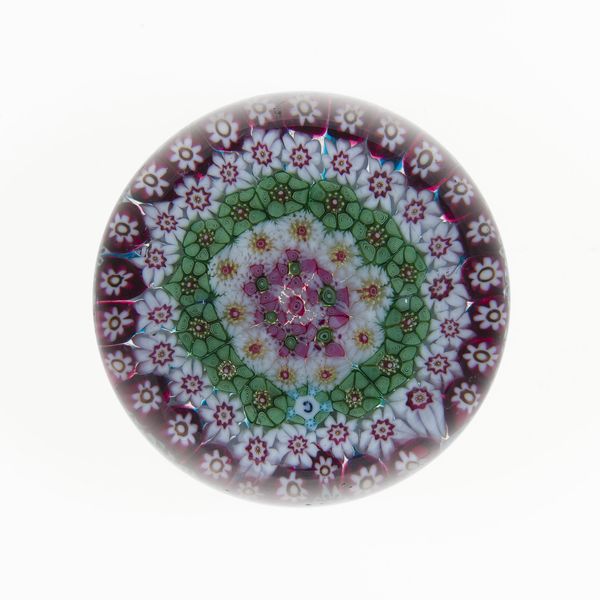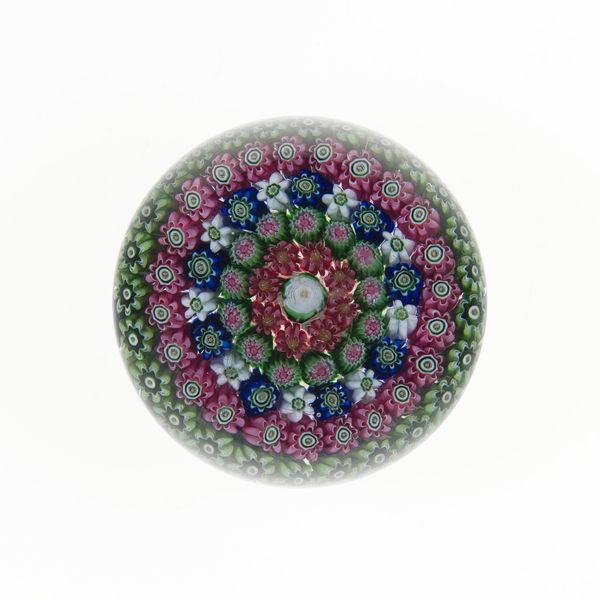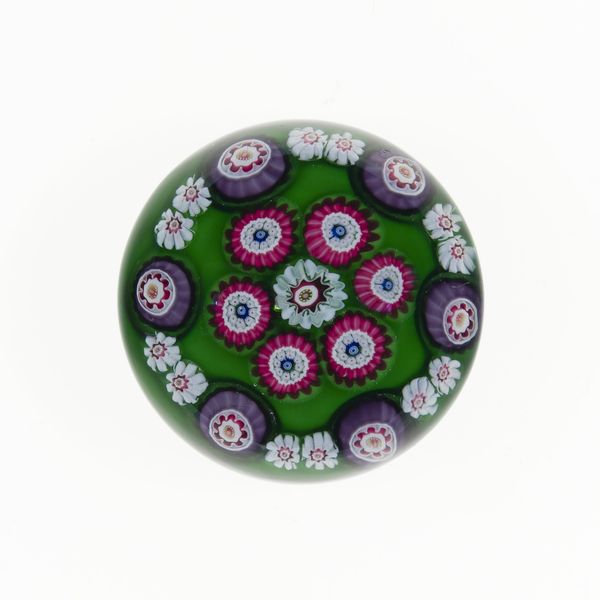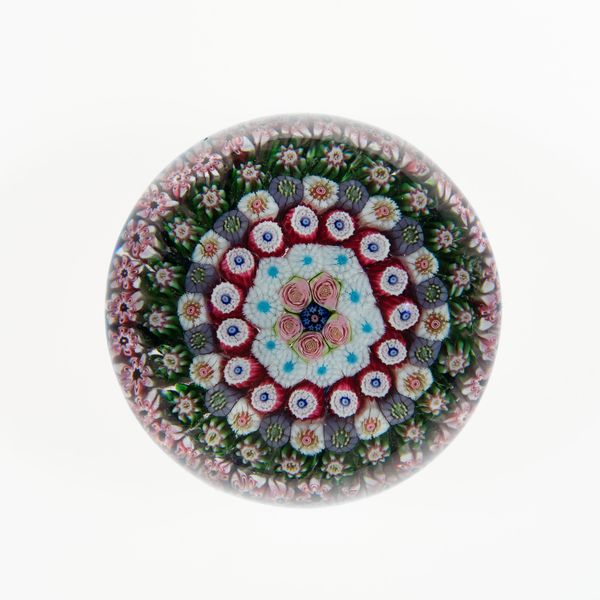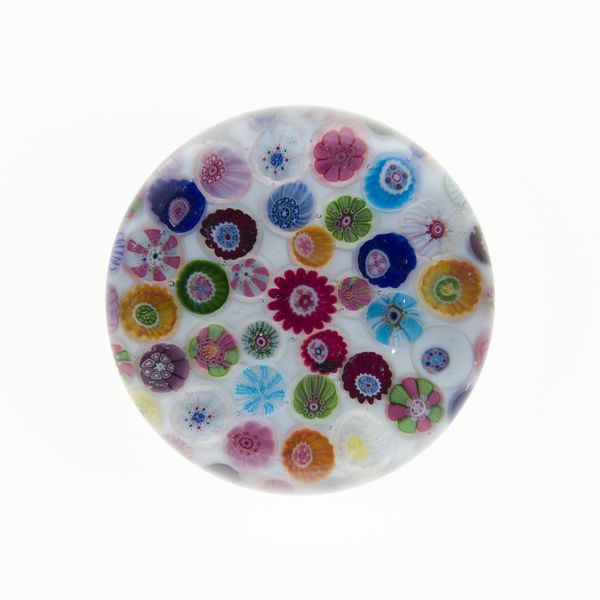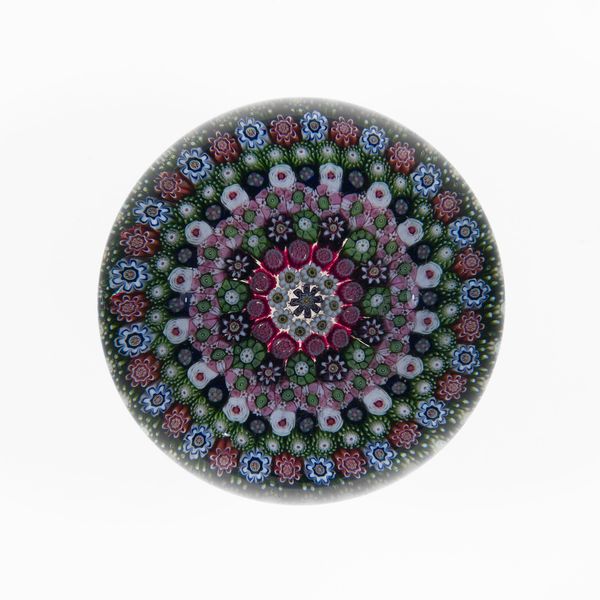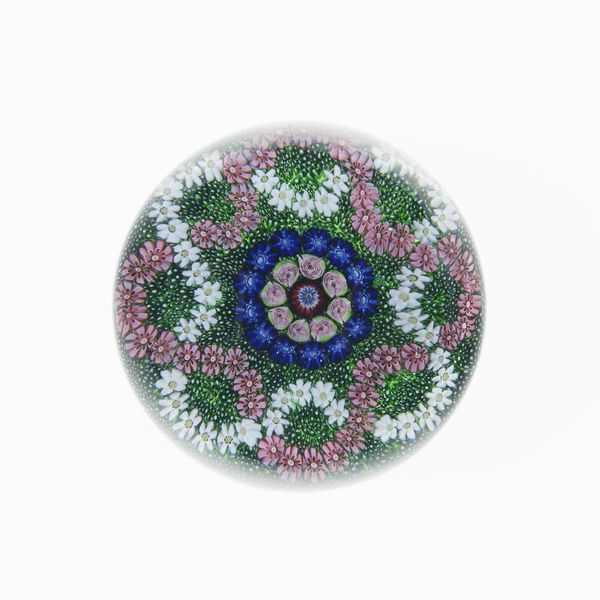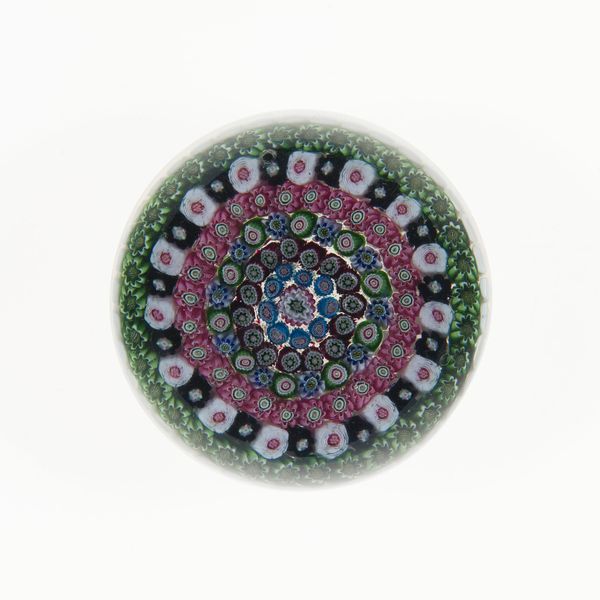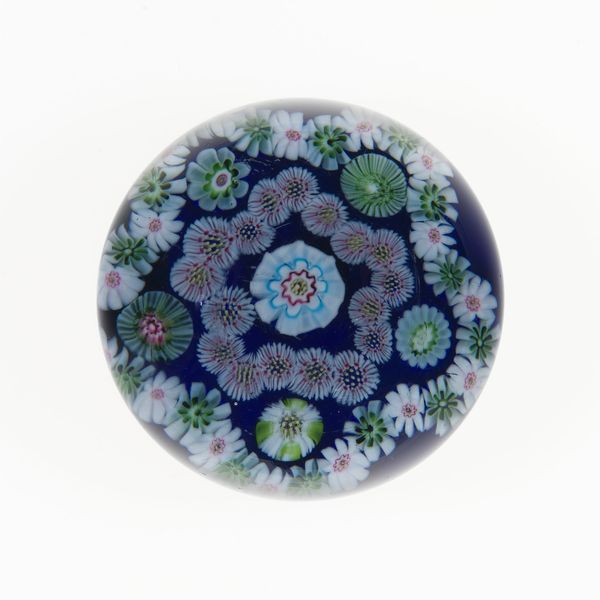
paper, glass
#
paper
#
glass
#
decorative-art
Dimensions: Diam. 4.5 cm (1 3/4 in.)
Copyright: Public Domain
This delicate glass paperweight was made in France by the Clichy Glasshouse sometime between 1837 and 1885. Look closely at the colorful array of miniature flowers, which are arranged in concentric circles. Each of these tiny blossoms began as a glass cane – that is, a long rod created by layering molten glass and then stretching it. When sliced in cross-section, these canes reveal complex patterns. Here, they've been arranged and then encased in clear crystal. This process required incredible skill, of course, but also the division of labor. Some glassworkers would have specialized in pulling the canes, others in arranging them, and still others in the final encasement. Considering all the steps, the production of these objects would have been time-intensive. Yet, the makers were able to produce such appealing objects, and at a price that a rising middle class could afford. This paperweight reminds us that even apparently modest objects have complex histories of making, labor, and consumption behind them.
Comments
No comments
Be the first to comment and join the conversation on the ultimate creative platform.
